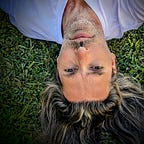The Soulset Shift
In the recent conversation between Lex Fridman and Joscha Bach, Joscha reiterates his theory of how consciousness arises which if find incredibly useful. So useful, that i base a large part of the argument for this post on it.
In essence he says that life always tries to optimise towards some “set-point”. It uses sensors to get information about the status of the world around it and actuators to influence that world to move towards life’s objective.
A cell, for example, continuously moves towards a specific internal disequilibrium, ingesting entropy from the environment to increase it and creating order to decrease it.
Once the complexity of the various set-points of an organism reaches a certain threshold in concert with the increase of the complexity of its sensors and actuators, consciousness arises as the most powerful tool to integrate the complexity of the task.
As Jeremy Lent points out in his recent book — The Web Of Meaning — our consciousness has two parts: the conceptual consciousness and the animate consciousness.
The conceptual part is the part in which we prioritise, plan and structure our activities towards our set-points. Its main tool to do this is reductionism, it breaks down reality into usable blocks to make sense of the world.
The animate part of the consciousness works differently. It integrates complexity and communicates in feelings.
The last ten millennia of human existence we have cultivated the use of our conceptual consciousness while subduing the animate consciousness. To use Daniel Schmachtenbergers’ language, we have extended the capacity of our hands to godlike powers — we can destroy life on earth literally by the push of a button — but we have failed to match this power with godlike love and wisdom.
We understand this. We look at the world through lenses of the latest IPCC report and we know that we have to change the way we do things. That is, our conceptual consciousness knows something needs to be done, but given the complexity of the situation, its reductionist outlook on the world fails. No level of mindset shift will change this.
We need a soulset shift to accomplish this. We need to nurture and trust in the power of our animate consciousness to help us navigate this dangerous moment in the existence of our species and much of the life on the planet.
The soulset shift can be achieved individually using a variety of tools and practices, ranging all the way from mindfulness-meditation to the targeted use of chemical substances as Jamie Wheal points out in his book —
Recapture the Rapture: Rethinking God, Sex and Death in a World That’s Lost its Mind — but without a change in culture, it is very difficult for an individual to maintain any soulset shift.
For a long time i had assumed that agreeing on species wide set-points would give rise to such a culture but hundreds of conversations with people all over the globe have shown me that this agreement already exists and Charles Eisensteins book — The More Beautiful World Our Hearts Know Is Possible — supports my subjective experience.
While a species level negotiation about desired set points, shared governance stays relevant and might be the next step in the evolution of our species: consciously and deliberatively setting species wide objectives, i have become convinced that people like Tyson Yunkaporta, Joe Brewer and Daniel Christian Wahl are onto something deeply important when they decide to engage with their local bioregion and its people.
So, let us start where we are. Let our animate consciousness do the work, let us trust it at least as much as the conceptual consciousness.
Let us shift our own soulsets in the way we already know feels right and good and life-affirming.
And let us build islands of culture and life wherever we are, our bioregions, our villages, our families.
—
Photo by Elianne Dipp from Pexels
